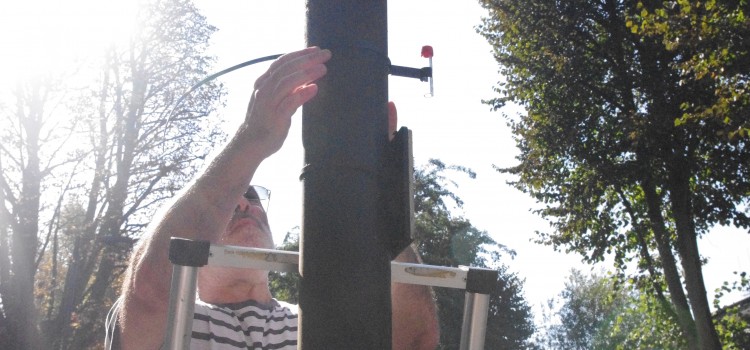
Mapping for Change can now enable up to four communities to undertake Air Quality Mapping projects by offering them a share of £1,000 funding. Proposals are invited from communities across London. The funds will cover the cost of purchasing diffusion tubes to measure nitrogen dioxide (NO2), laboratory analysis, and map creation. There is a strong likelihood of media coverage throughout the project.
Community Air Quality Monitoring
Many people are rightly worried about London’s air. But air pollution can be hard to measure, and most air quality monitoring carried out by local councils relies on measurements from a few fixed measuring points. These often fail to reflect the ways in which air quality varies across small distances. There are many factors that affect our air, which makes the need for better measurement even more important.
The data you gather will help create a clearer picture of air quality at the very local level. This will inform us all and help encourage the Mayor and local councils to take effective measures to improve our environment.
How does this work?
Mapping for Change is a social enterprise based at University College London. We can help communities to collect information to build a better picture of local air quality. You mobilise the community, collect the information – we do the technical analysis and map the results. The aim is that each community uses the new data to inform, raise awareness and affect some form of change in their community.
You will use diffusion tubes which should be distributed across different sites in a community; on lampposts, street signs, a fence or other appropriate sites to collect samples. They should be left in the location for one month, and then returned to us for analysis. The results from the analysis can be added to an online interactive ‘Air Quality Community Map’ to be shared with others and we will create paper maps on your behalf.
What do you need to commit to?
To coordinate with the local authority monitoring timetable, the collection of air quality samples should commence on 1st July 2015, and analysis will take place in August with results to be published in September 2015. Teams of volunteers should be made up of around six volunteers (or more) to collect samples and one person to act as the Local Co-ordinator. Co-ordinators must be able to attend an introductory meeting on June 23rd 2015.
To participate in assessing NO2 levels all that is required of volunteers is:
1. 1 hour in week one to position the diffusion tube in a suitable location
2. 1 hour in the fourth week to collect the diffusion tubes
3. ½ an hour at the beginning and the end to collect the equipment and drop it off to your Local Co-ordinator. You don’t need to be any kind of expert. We’ll give you everything you need and will analyse the information for you. When that’s been done we will give you maps of the data which can be discussed at an open community meeting and be used for dissemination, raising awareness and local advocacy.
To Submit a Proposal:
Tell us about:
• Your neighbourhood: the location and about the area
• Your group or organisation (for example are you a tenants or residents association or a local interest group?)
• Who will lead the project
• Problems and concerns with air quality in your neighbourhood and why you would like to carry out the monitoring.
• What you would like to change, how you will use the results and disseminate your activities.
Deadline for submission is 16th June, 2015.
Successful applicants will be informed on June 18th.
Start date for monitoring will be July 1st, or earlier.
E-mail your proposal to: info@mappingforchange.org.uk
OR by post to:
Community Air Quality Mapping Project
Mapping for Change
The Chorley Institute
The Pearson Building
University College London
Gower Street
WC1E 6BT
We are working with various different groups and neighbourhoods across the Borough of Richmond upon Thames and in particular with a community against a school being sited on the A316 at Manor Circus. It’s a dual carriageway and known pollution hotspot, but we have no data to back up view that this makes it entirely unsuitable for a primary school.
Hi Andree,
Please do go ahead and apply for the funding support. It would provide you with a months worth of data regarding nitrogen dioxide levels around the proposed site. Do you know whether the planned development is in an Air Quality Management Area?
Is there any chance of doing this in the North West of England? I live in Manchester where we have Air Pollution problems especially in Davyhulme where we have 6 schools alongside the M60, Trafford Centre, proposed Waste Incinerator, new Salford Docks and Coal Bed Methane ExtractionPlant alongside Residential Housing.
Hi Peter,
Unfortunately, this round of funding is to support communities in London but we are well aware of the need for more community-led monitoring programmes like this in other parts of the country, particularly in cities such as Manchester.